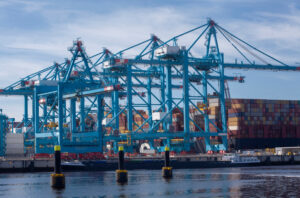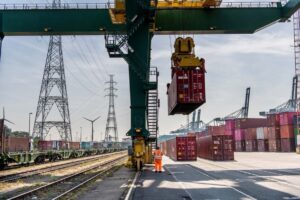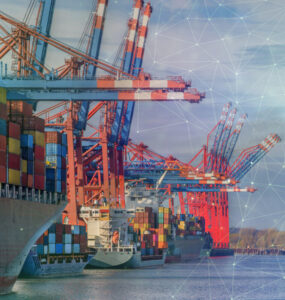In partnership with Trelleborg
Balancing port safety, efficiency, sustainability and investment costs to accommodate the future of the shipping industry, has become a consistent challenge. Port owners are under pressure to keep up with the future trends in shipping, such as managing increased vessel size and growing sustainability focuses. Keeping up with these demands can have a significant impact on costs, operations are in danger of functioning at much lower efficiency and risking personal health & safety, due to relying on dated infrastructure and a lack of proper investment.
The impact of these challenges is changing attitudes towards docking and mooring investment decisions and shaping the ports of the future. Port owners and operators must decide if they should invest in infrastructure in order to future-proof their operations, so that they can handle even bigger vessels and increase throughput and efficiency. Although a large upfront cost, these changes will ultimately translate to improved sustainability by reducing the amount of time vessels stay in ports and thus decreasing emissions.
These changes would help support the growing focus across the maritime sector, and reflect the wider global movement, around environmental issues and legislative changes such as the 2020 deadline for the introduction of the IMO sulfur cap.
Ideally, ports would invest in infrastructure that doubles the rate of discharge and halves the amount of time a ship stays in port, but it takes a long time to increase the capacity of a wharf and significant capital expenditure. Ports are therefore turning to technology to identify potential areas where efficiencies can be created, without the need for significant capital outlay.
Generating value
It is becoming increasingly more important for maritime engineers to accurately define the limits of safe operation for various types of mooring systems, all while taking into account increasing vessel sizes.
As ships become bigger, so too does the energy placed on mooring lines. If the integrity of a line has been compromised to the point of breakage, the impact within the port is amplified and the potential for injuries and fatalities increases. In addition, frequent travel between extreme global climates, for example, going from heat to freezing temperatures, can cause the mooring line to weaken.
By implementing more technology-enabled docking and mooring systems, this can take the pressure off traditional mooring equipment and in turn reduce risks and unplanned downtime.
Delivering revenue and enhancing safety
Investment decisions should additionally be made on the basis of how to best utilize automated docking and mooring technology to deliver revenue and enhance safety. However, there are numerous challenges to consider beforehand.
As ports accommodate ships with much bigger and longer dimensions onto traditional structures, typical mooring line arrangements are no longer effective, resulting in less-than-ideal mooring configurations, which can reduce the capacity of services and cause safety implications.
In addition, certain environmental factors such as long waves and the large tidal ranges in certain areas also cause issues for port operations. The bigger moored vessels become, the greater the potential impact of draft and oscillation on line breakage and wharf damage. Alongside this, international shipping traffic grows alongside vessel capacity, increased congestion creates hydrodynamic suction and repulsion forces between passing vessels. This can cause the moored vessel to break lines, leading to major damage of wharfs and unsolicited excursions of vessels.
It is key to look towards new technologies that are being developed around increasingly accurate computer modelling for mooring systems. This modelling should also include full-scale validation and testing that is fully capable to take into account larger vessel sizes. Combining warning systems with more automated mooring systems allows for easier handling of multiple lines under tension throughout the process or exploring rope-free automated mooring systems, both of which reduce the hazardous risk of working in the mooring/loading area.
There is growing awareness of how automation can also help to mitigate the lack of global standards around mooring line quality. This includes disparities between guaranteed minimum breaking load and actual breaking load, and aids in preventing the parting of ships’ lines and subsequent damage.
Conclusion
As attitudes continue to shift in favor of automated mooring, the industry continues to look ahead for greater opportunities amid the many new global demands, regulations and challenges. The conscientious integration of emerging maritime technologies holds great potential, such as the ability for port owners to future-proof their infrastructure to handle larger vessels while meeting regulatory and voluntary targets across air quality, climate change and energy efficiency.
Taking careful note of common, but costly, global shipping issues is the first step in making smart investment decisions that truly optimize efficiency, safety, sustainability and by extension, long term costs.









